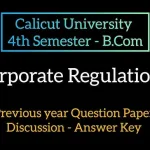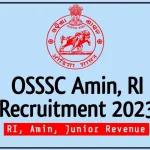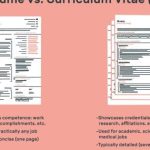When you’re in the job market, it’s essential to understand the recruitment and selection processes, as they play a crucial role in your hiring journey. Organizations often use these two terms interchangeably, but they are distinct stages of the hiring process. Understanding their differences will help you navigate job applications better and ensure you know what to expect from each phase.
Recruitment is the initial step, where organizations identify and attract potential candidates. Selection, on the other hand, is a more refined process where they assess and choose the right candidates. Let’s dive deeper into these two processes and understand their roles in the hiring cycle.
Top 10 Key Points About Recruitment and Selection
-
Vacancies:
Recruitment involves identifying job vacancies within an organization. These can be positions that need to be filled for various reasons, such as expansion, turnover, or new project development. -
Departments:
Both processes span different departments within an organization, and recruitment often requires collaboration across multiple teams to ensure the right talent is attracted for each department. -
Pay Scale:
The recruitment stage often provides an outline of the expected pay scale for the role, while the selection phase discusses salary details more clearly once the candidate is chosen. -
Eligibility Criteria:
Recruitment usually starts with setting the eligibility criteria, such as required qualifications, experience, and skills, which are essential for the selection process. -
Job Description:
During recruitment, job descriptions are crafted, outlining the responsibilities and expectations for the role. This description is used in the selection process to assess if candidates meet the requirements. -
Application Process:
The recruitment phase includes creating and distributing job advertisements, online job portals, and other channels to attract applicants, while selection begins once applications are received. -
Shortlisting Candidates:
Recruitment involves attracting a broad pool of candidates, while the selection phase includes shortlisting candidates based on their qualifications and experience. -
Interviewing Candidates:
The selection process includes interviews to evaluate the candidates’ skills, personality, and cultural fit within the company. -
Selection Tests:
Some organizations may require candidates to undergo tests, such as aptitude tests, psychometric evaluations, or skills-based assessments, which form part of the selection process. -
Final Selection:
After completing the selection steps, candidates who pass all assessments, including interviews and tests, are offered the job. Recruitment concludes with attracting candidates, while selection ensures the right person is chosen.
Who Can Apply?
For any recruitment drive, the eligibility criteria will vary depending on the role. Common requirements typically include:
-
Qualifications: Minimum educational qualifications or professional certifications.
-
Age Limit: Candidates usually need to fall within a specified age range, depending on the job.
-
Experience: Certain roles require prior work experience, while others may be open to fresh graduates.
-
Physical Standards: Some jobs, especially in defense or physically demanding roles, may require candidates to meet specific physical standards.
-
Category-Based Relaxations: Relaxations in age, qualification, and physical standards may be provided for candidates from specific categories like SC, ST, OBC, etc.
Step-By-Step Guide on How to Apply
-
Step 1: Research Available Roles
Browse the organization’s recruitment advertisement to check the eligibility criteria, responsibilities, and qualifications. -
Step 2: Prepare Your Documents
Ensure that your resume, educational certificates, work experience documents, and any other necessary files are up-to-date. -
Step 3: Fill Out the Application Form
Complete the online application form or offline form (as per the job posting) with accurate details. -
Step 4: Submit the Application
After reviewing your application, submit it within the prescribed deadline. -
Step 5: Wait for Acknowledgment
After submission, you may receive an acknowledgment email confirming your application was successfully received. -
Step 6: Selection Process
If shortlisted, you will be contacted for interviews, tests, or other stages of the selection process.
Important Dates
-
Start Date: The date when the application process begins.
-
Last Date: The deadline for submitting applications.
-
Exam Date: For positions that require written exams, the schedule for exams is announced.
-
Interview Date: Candidates who pass the written exam will be invited for interviews.
-
Result Date: After completing all stages, the final result is declared.
Selection Process and Stages
The selection process is a more focused phase where employers narrow down their pool of applicants to find the best fit. The selection steps may include:
-
Application Review:
The initial screening of applications to shortlist eligible candidates. -
Written Test/Online Assessment:
Depending on the role, candidates may need to take a written exam or online assessment to test their knowledge and skills. -
Physical Efficiency Test (PET):
For specific roles (e.g., law enforcement or defense), candidates may have to pass a physical fitness test. -
Interview:
Shortlisted candidates are invited for interviews to assess their skills, experience, and cultural fit within the company. -
Final Selection:
Based on performance in all stages, the final candidates are selected and offered the position.
Salary, Perks, and Benefits
Once you’re selected for a role, you’ll likely enjoy a range of benefits:
-
Salary: Based on your position, experience, and the company’s pay scale.
-
Allowances: These could include travel, housing, and medical allowances.
-
Benefits: Health insurance, retirement plans, and paid time off are common.
-
Job Security: Permanent or long-term contract roles typically offer job security.
How to Apply for This Job
-
Follow the steps mentioned above to apply for the recruitment process.
-
Keep track of all relevant dates, such as the application deadline, test dates, and interview schedules.
-
Ensure your application is complete and submitted on time.
Expert Tips for Preparation
-
Study the Job Description: Know exactly what the role requires, so you can tailor your application to highlight relevant skills.
-
Practice Common Interview Questions: Familiarize yourself with frequently asked questions in interviews for your desired job.
-
Stay Organized: Keep all required documents ready and ensure you meet the eligibility criteria before applying.
-
Avoid Common Mistakes: Pay attention to details—spelling errors, incorrect information, or missed deadlines can hurt your application.
FAQ for Difference Between Recruitment and Selection
Q1: What is the main difference between recruitment and selection?
Recruitment is the process of attracting candidates to apply for a job, while selection is the process of choosing the best candidate from the applicants.
Q2: Why is selection important?
Selection ensures that the best-fit candidate is chosen for the role, considering both qualifications and cultural fit.
Q3: Can recruitment happen without selection?
Yes, recruitment can occur without selection. In some cases, organizations may advertise roles to gather talent even if no immediate hiring is planned.
Q4: How long does the recruitment process take?
Recruitment can vary in duration depending on the role, the number of applicants, and the urgency of hiring, typically lasting from a few weeks to several months.
Q5: Does the selection process always include an interview?
While interviews are common in the selection process, not all positions require an interview. Some may rely on tests or assessments instead.
Latest Posts
- Step-by-step guide to download and apply for jee mains admit card 202
- Comprehensive 2025 government holidays and recruitment details for job seekers
- JEE Mains Admit Card 2025: Your Step-by-Step Guide to Downloading the Hall Ticket
- Everything You Need to Know About 2025 Government Holidays Recruitment
- Comprehensive Guide to rrb d group recruitment 2025 – Eligibility, Vacancies, and Application
- Detailed guide to nps trust recruitment 2025 vacancies, eligibility and apply process
- Comprehensive guide to hpcl recruitment 2025 notification, vacancies, and application process
- ignou bed admission 2025 complete recruitment guide with eligibility and process
- Comprehensive Guide to Indian Army Agniveer Recruitment 2025 Notification and Jobs
- Everything You Must Know About CBSE Board Exams 2025 Changes & New Rules






